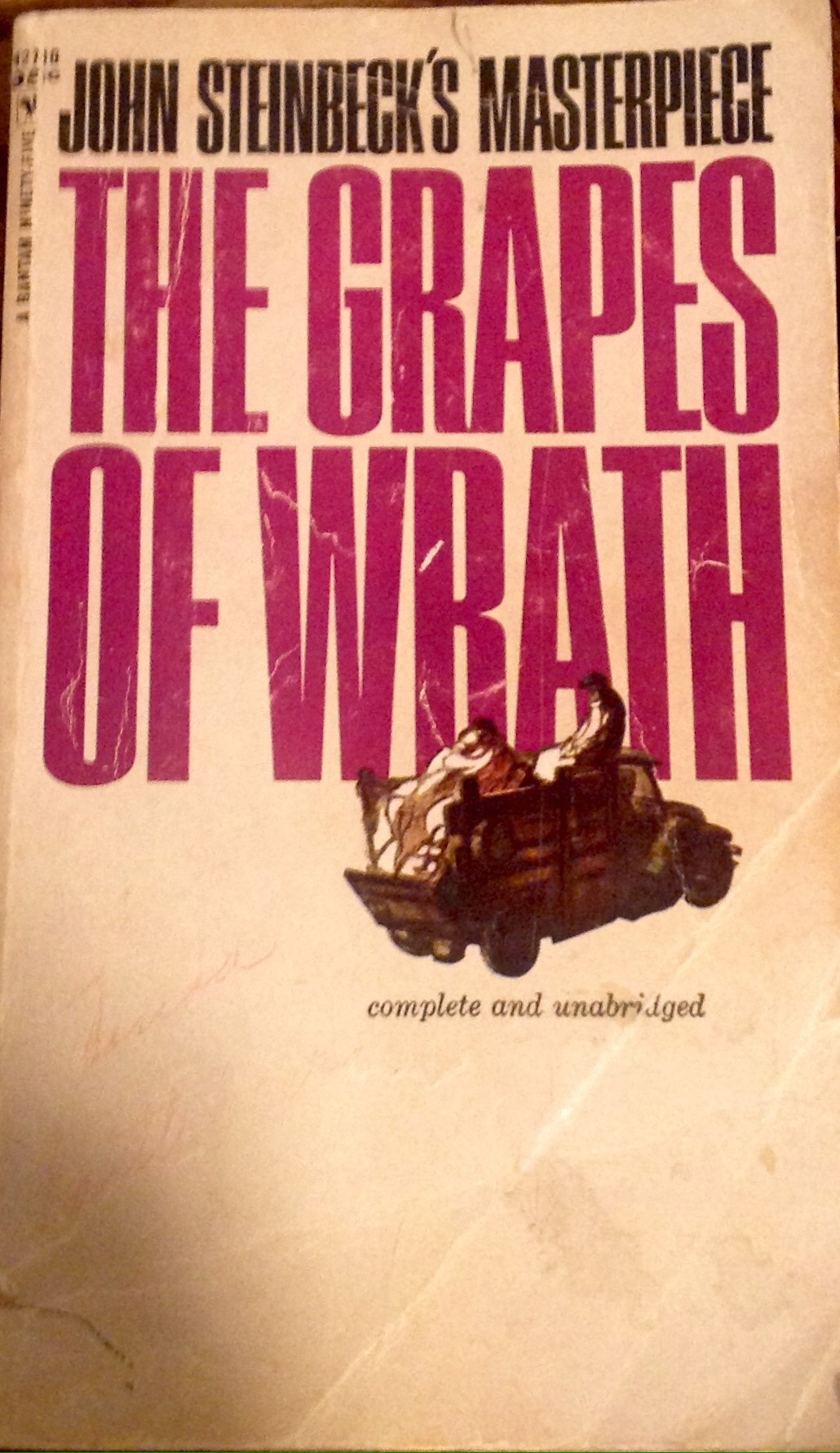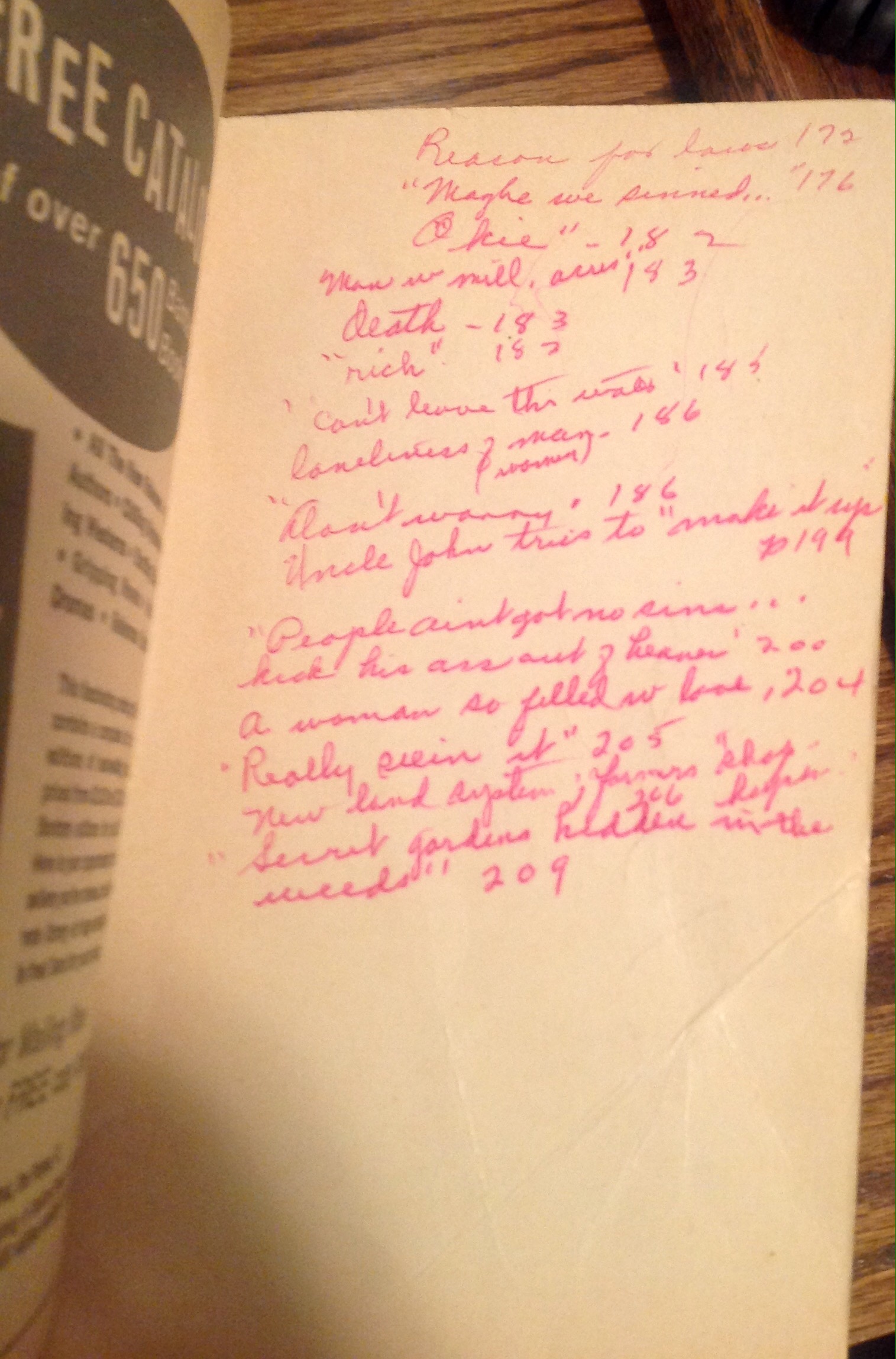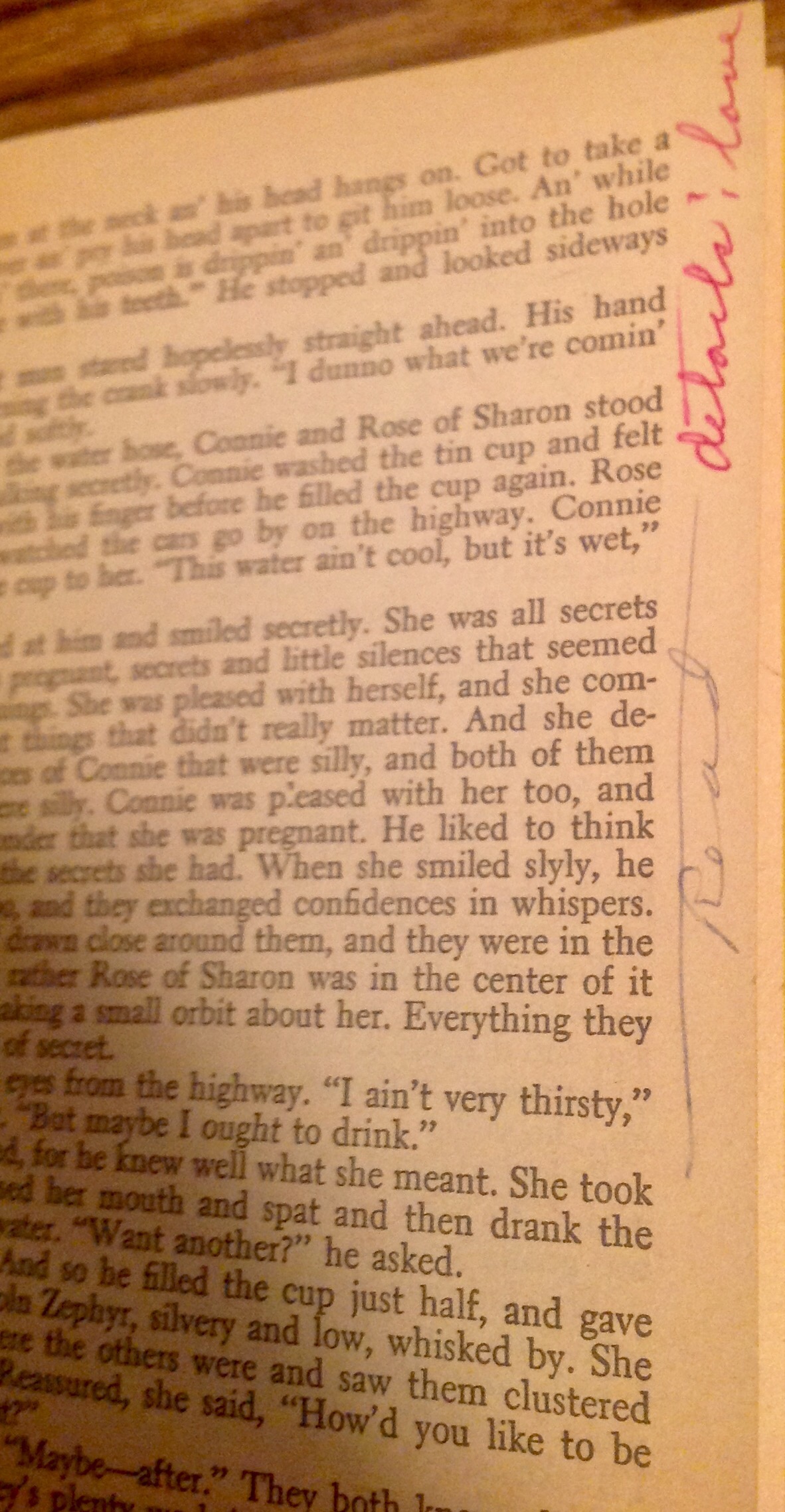Book Review: The Grapes Of Wrath
 Yes, I really am going to “review” one of the greatest books ever written. But, it’s a slightly different kind of review.
Yes, I really am going to “review” one of the greatest books ever written. But, it’s a slightly different kind of review.
When I was in high school, my World Literature class read a book by John Steinbeck. We spent weeks on it. We read it. We analyzed the themes. We eventually wrote a paper on it. No, it was not Grapes of Wrath. It was Winter of Our Discontent. In my research I found where many critics considered Winter of Our Discontent his worst book. I mentioned that in my final paper. I got a C.
We didn’t read Grapes of Wrath. I’m still stunned by the fact that Mrs Hawthorn (her real name) would pass up one of the jewels of American Literature to give us Steinbeck’s worst novel.
I chose to read Grapes of Wrath as an adult because I owned a copy and I wanted to read it. I read it with my grandmother. That probably requires some explanation since my grandmother has been gone for these past twenty-five years. Grandma Venda was many things in her career. She was a television writer for awhile. She also wrote short stories and a Christmas play. And she was an Honors High School English teacher.
When she passed away, many of her things came to me. Among those things was her copy of Grapes of Wrath. It’s a cheap paperback copy published in 1964. The year I was born, incidentally. The book cost $0.95 when it was new. Now, with the brittle pages and the failing binding, it probably wouldn’t even be considered worth putting on the shelf at a discount store. I’m not planning to give it away. It’s priceless.
See, this is the copy of Grapes of Wrath that my grandmother taught from. It’s full of her notes. It asks interesting questions. It highlights sections that should be read aloud. It makes observations on human nature.

My grandmother, Venda Brown Bliss Castleberry was born in 1912 in Pocatello, Idaho. She grew up during the time that Steinbeck is writing about. While she never lived in Oklahoma, she was familiar with the Great Depression and the strain it put on families and on the country.
Steinbeck speaks to the reader from the pages. Grandma Venda spoke to me from the margins.

During the time I was reading through this, life was throwing my family a series of curve balls. My wife noticed me picking up the book for a few minutes each night before bed.
Why do you want to read that depressing thing?
Why indeed? I’d read it years before and while I had forgotten enough of the story to make it interesting to travel with the Joad family again, I did remember the ending was horribly sad. Something about the family being stuck in a flooded box car with a dead baby and all hope lost.
Not to spoil an 80 year old story for you, but that’s not exactly what happened. More on that in a minute.
It was hard to read. Especially since my own family was struggling with sick babies and wayward children, Steinbeck’s story sometimes struck too close to home for comfort. And yet, as I stepped back out of the story each night. I realized two important things.
First, my life could be much worse. The Joads were at the very bottom of the socio-economic scale and they were sinking. I’m doing pretty well. By comparison I’m doing fantastic.
Second, where there’s life there’s hope. As my granddaughter literally struggled for breath, I kept my hope going by reminding myself that where there’s life there’s hope. The Joads show that. As each setback pushes them further and further down, they find a way, often by pulling together as a family to get back up. Where there’s life there’s hope. My granddaughter is well on the road to recovery and a full life. Where there’s life there’s hope. That was the message I got from Grapes of Wrath.
The ending: I missed it the first time. I always imagined the family finally, after months of setbacks, giving up and quitting. They don’t. They reset their objectives. and in the final scene, they provide life for a dying man. Steinbeck didn’t make them lose hope. He gave them a rebirth. There was life and there was hope.
One other interesting bit thing happened while I was reading. I got a scene where the father of two Okie children asks a waitress for the price of piece of candy.
Is them penny candy, ma’am?
Which ones?
There, them stripy ones.
Oh – them. Well, no – them’s two for a penny.
As the dirt poor traveller exits with his two excited children, a truck driver says to the waitress,
Them wasn’t two-for-a-cent candy.
What’s it to you?
Them was nickle a piece candy.
I realized as I was reading that I’d heard the story before. But, not in a book. It was in a song: “Here Comes That Rainbow Again”” by Kris Kristofferson.
How much are them candies, they asked her
How much have you got, she replied
We’ve only a penny between us
Them’s two for a penny, she lied
Kristofferson apparently was so impressed with the poinant story that he turned it into a song in the 1970s. I realized again how impactful Steinbeck’s timeless story remains.
What I liked
The best part of this book is a part that you can’t share. It was getting to read with my grandmother looking over my shoulder asking questions, making comments. But, Steinbeck’s story is an important piece of American history. The amount of time between today (2017) and the story of the Joad (1930) is 87 years. Eighty-seven years prior to the events in the story, America was headed into the Civil War.
And of course, the writing is brilliant. The story is compelling and he helped me care about each of the characters.
What I didn’t
Grandma made plenty of notes in the first third. After the first test (I know where it was because she wrote it on the top of the page) she wrote fewer notes.
As for Steinbeck’s story? It’s perfect. And yet, not so perfect that it discourages me from striving to be a writer.
What It Means For You
If you’re a reader, this is a wonderful classic that is worth revisiting.
My Rating
Ha Ha. Four out of four stars. . .only because I can’t give it five.
Rodney M Bliss is an author, columnist and IT Consultant. His blog updates every weekday. He lives in Pleasant Grove, UT with his lovely wife, thirteen children and grandchildren.
Follow him on
Twitter (@rodneymbliss)
Facebook (www.facebook.com/rbliss)
LinkedIn (www.LinkedIn.com/in/rbliss)
or email him at rbliss at msn dot com(c) 2017 Rodney M Bliss, all rights reserved

Trackbacks & Pingbacks